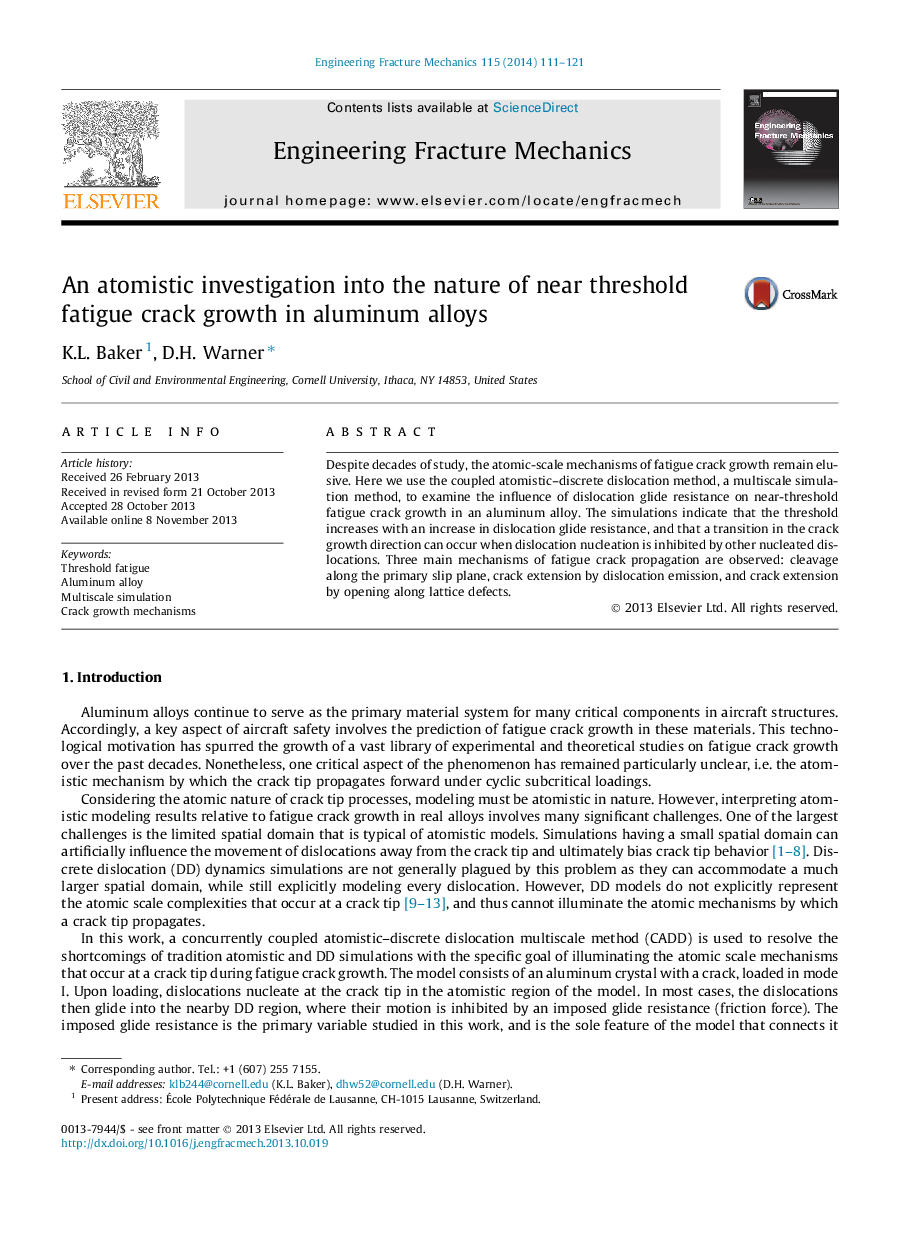| Article ID | Journal | Published Year | Pages | File Type |
|---|---|---|---|---|
| 767090 | Engineering Fracture Mechanics | 2014 | 11 Pages |
•Coupled atomistic–discrete dislocation modeling is used to study fatigue crack growth.•The growth threshold increases with an increase in homogeneous dislocation glide resistance.•The presence of dislocations near the crack tip promotes a change in crack growth direction.•Three mechanisms of fatigue crack propagation are observed, depending on dislocation glide resistance.
Despite decades of study, the atomic-scale mechanisms of fatigue crack growth remain elusive. Here we use the coupled atomistic–discrete dislocation method, a multiscale simulation method, to examine the influence of dislocation glide resistance on near-threshold fatigue crack growth in an aluminum alloy. The simulations indicate that the threshold increases with an increase in dislocation glide resistance, and that a transition in the crack growth direction can occur when dislocation nucleation is inhibited by other nucleated dislocations. Three main mechanisms of fatigue crack propagation are observed: cleavage along the primary slip plane, crack extension by dislocation emission, and crack extension by opening along lattice defects.
